Getting your Trinity Audio player ready...
A newly-revealed set of extremely rare photographs provide a glimpse into the lives of those who settled in Israel decades before the country’s official establishment in 1948.
The photos obtained by Ynet were originally shot in black and white and were carefully recolored by “MyHeritage” using advanced technology.
13 View gallery
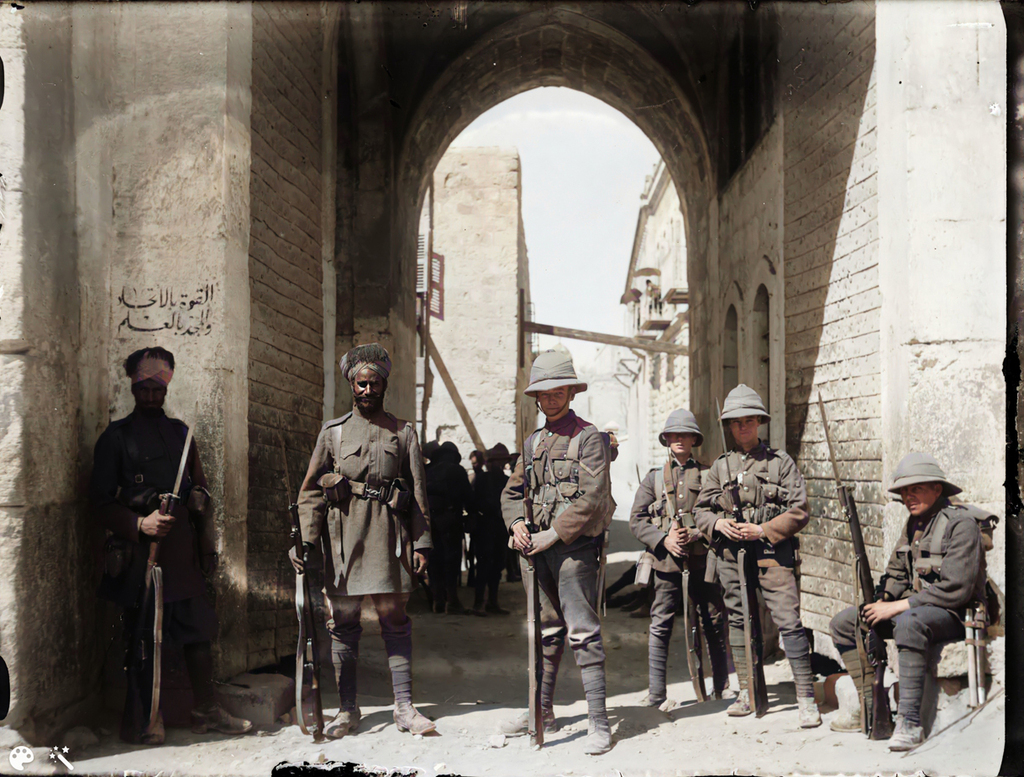

British and Indian soldiers stationed at the Lions' Gate, April 1920
(Photo: The American Colony Photo Department, MyHeritage)
They were taken by several residents of the American Colony - a cooperative commune established by Messianic Christians and evangelicals from Sweden in 19th-century Ottoman Jerusalem.
13 View gallery
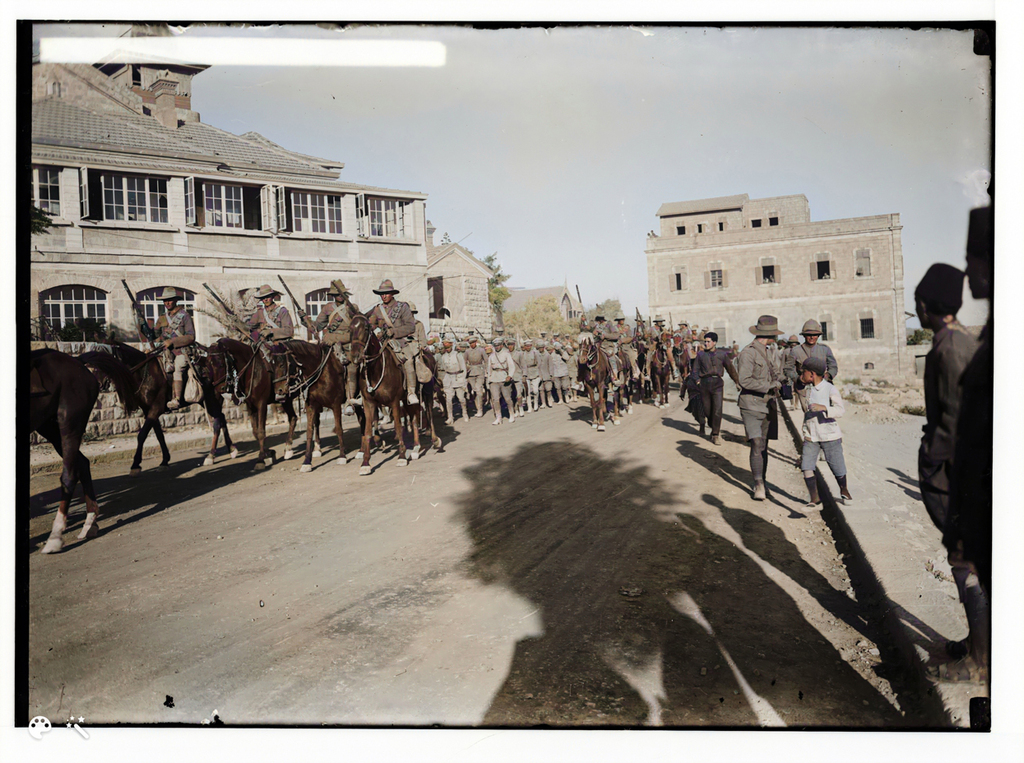

A convoy of German POWs being led through the streets of Jerusalem during World War I, 1917
(Photo: The American Colony Photo Department, MyHeritage)
These included several well known photographers such as Hall Lars Larson, Eric Matson and John D. Whiting.
13 View gallery
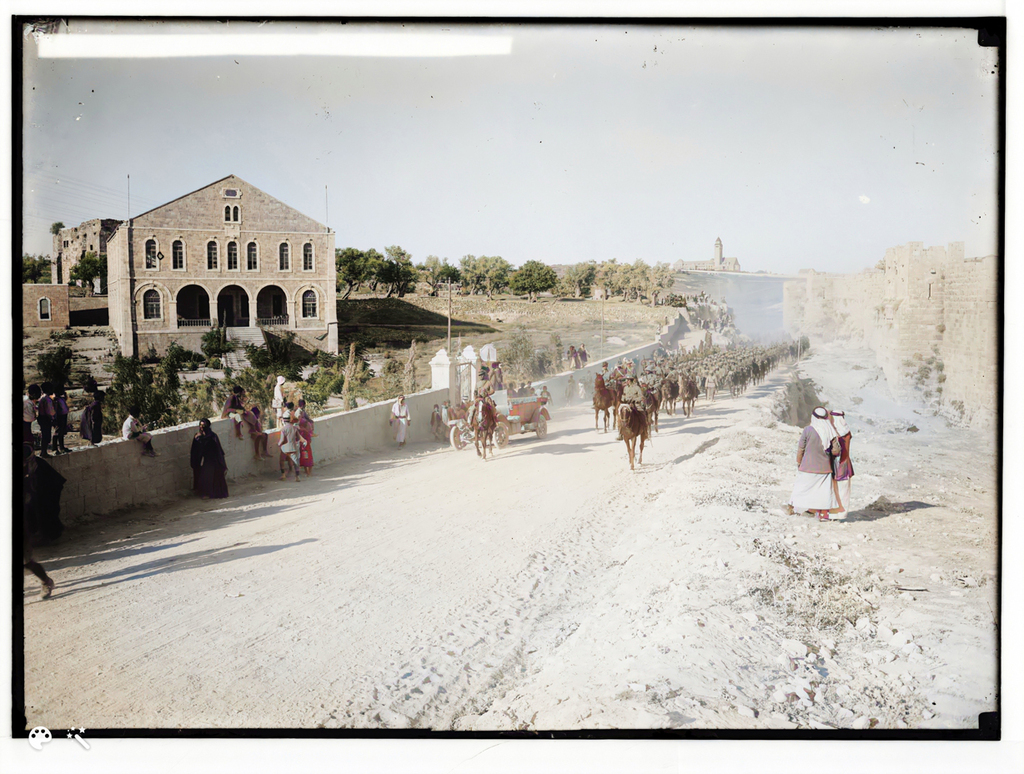

A convoy of German POWs being led through the streets of Jerusalem during World War I, 1917
(Photo: The American Colony Photo Department, MyHeritage)
These one-of-a-kind pictures show some of the most well known historical events in Israel’s history, as well as some of the most influential people in the history of the Jewish state.
13 View gallery
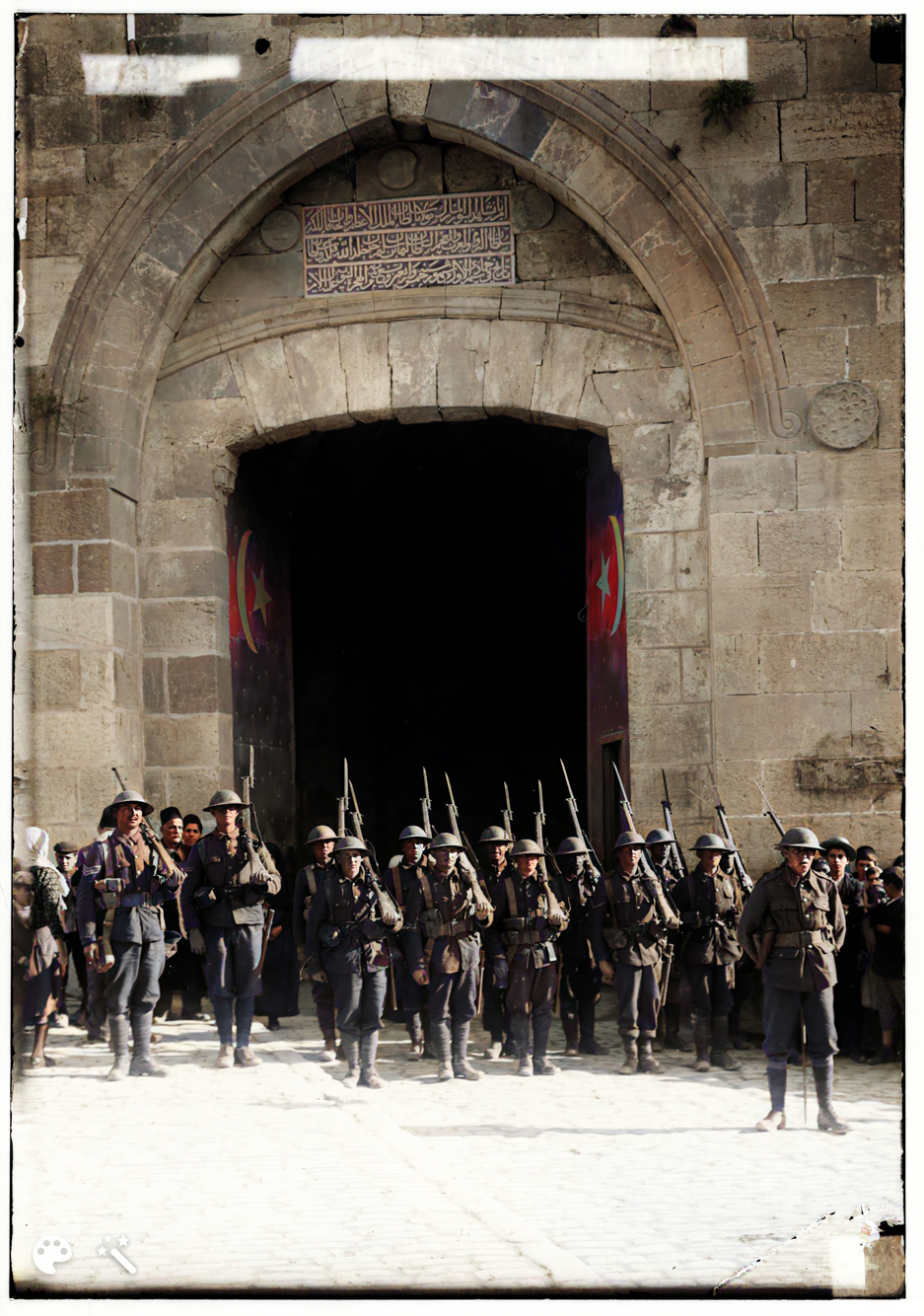

British soldiers in Jerusalem's Jaffa Gate, after the Ottoman's surrender of the city, December 1917
(Photo: The American Colony Photo Department, MyHeritage)
Several pictures show the battle for Sinai and Israel (1918-1915): A long, fraught campaign fought between the Ottoman and British armies during World War I.
13 View gallery
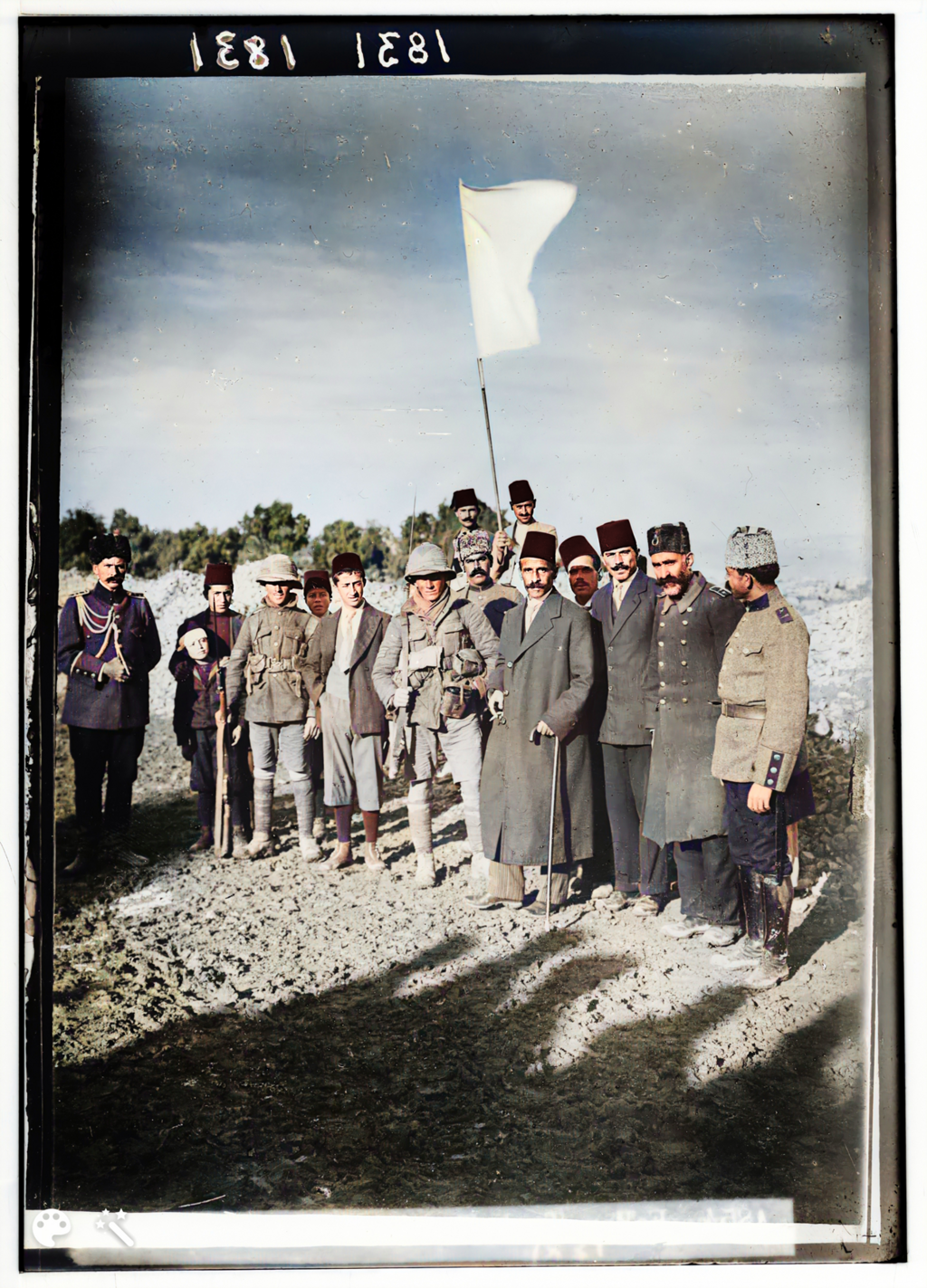

Ottoman Jerusalem's surrender ceremony in the First World War, in which Mayor Hussein Salim al-Husseini waves a white flag and hands it to two British scouts, December 1917
(Photo: The American Colony Photo Department, MyHeritage)
Another set of pictures show the locust plague that befell the country during the war, as well as the conquest of Jerusalem by General Edmund Allenby and the Ottomans’ surrender of the city to the British.
13 View gallery
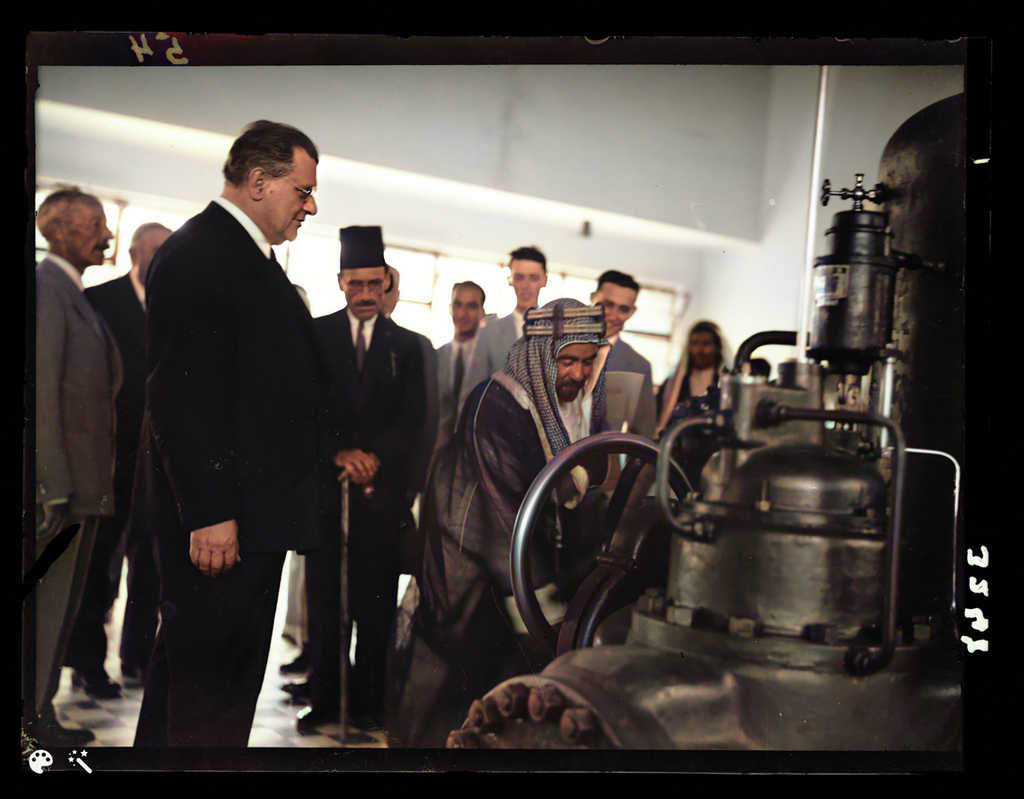

Jordan's King Abdullah I operates the Relations turbines with Industrialist Pinchas Rotenberg at the inauguration of the Naharayim power station, June 1932
(Photo: The American Colony Photo Department, MyHeritage)
After the establishment of the British Mandate, the administration decided to officially hire some of the American colony’s photographers, who were subsequently invited to commemorate important ceremonies.
13 View gallery
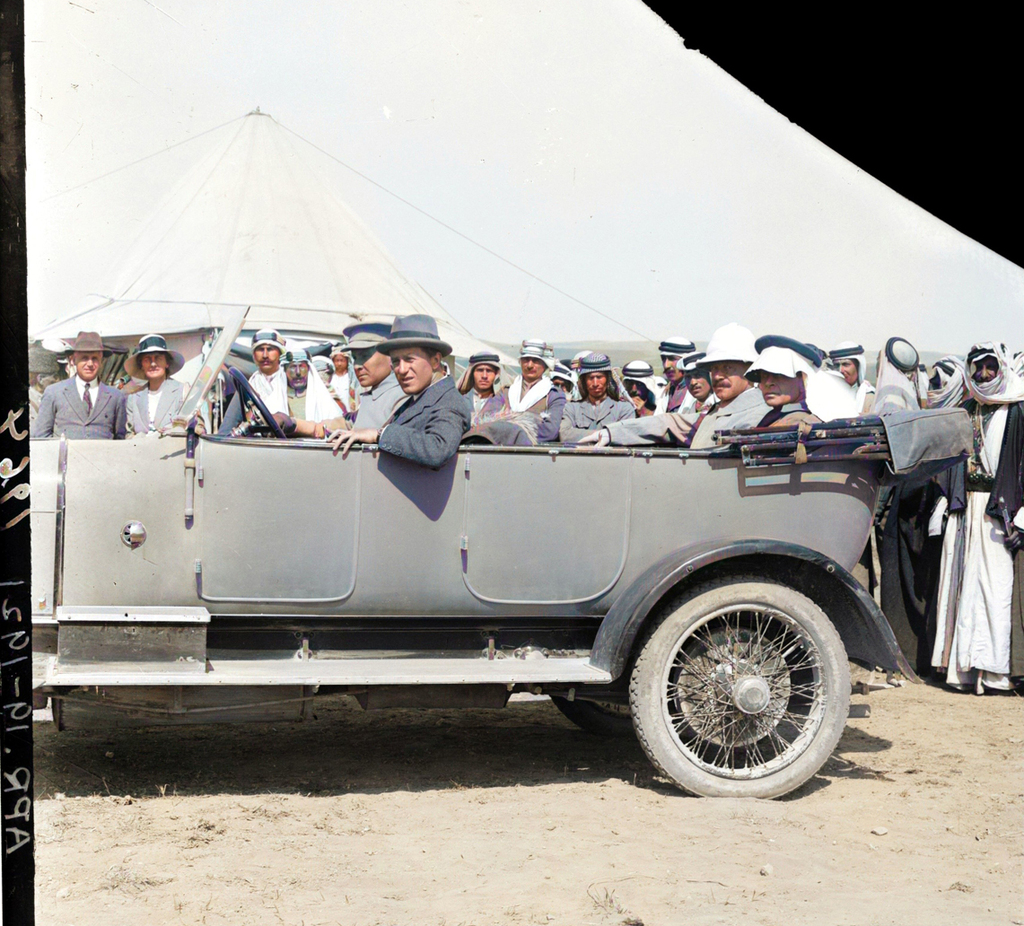

Top commissioner of Palestine Herbert Samuel, April 1929
(Photo: The American Colony Photo Department, MyHeritage)
Among the most notable events photographed by the Americans were the inauguration ceremony of the Hebrew University on Mount Scopus in 1925, the inauguration ceremony of the Nahariya power station in 1932, and the coronation celebrations of King George VI in 1936.
13 View gallery
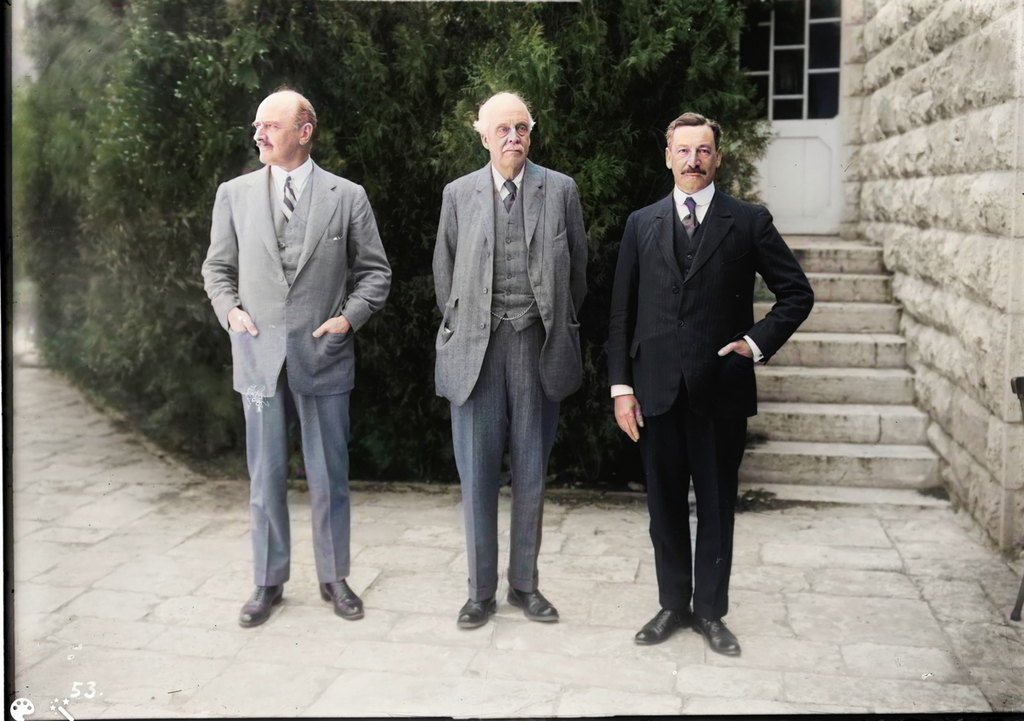

Lord Arthur James Balfour, Lord Edmund Allenby and High Commissioner Herbert Samuel at the inauguration ceremony of the Hebrew University of Jerusalem, April 1, 1925
(Photo: The American Colony Photo Department, MyHeritage)
A large portion of said photos show some of the mandate’s well known officials, such as General Allenby, Top Commissioner of Palestine Herbert Samuel, Lord Arthur James Balfour, Winston Churchill during his time as the British Colony Minister, and many more.
13 View gallery
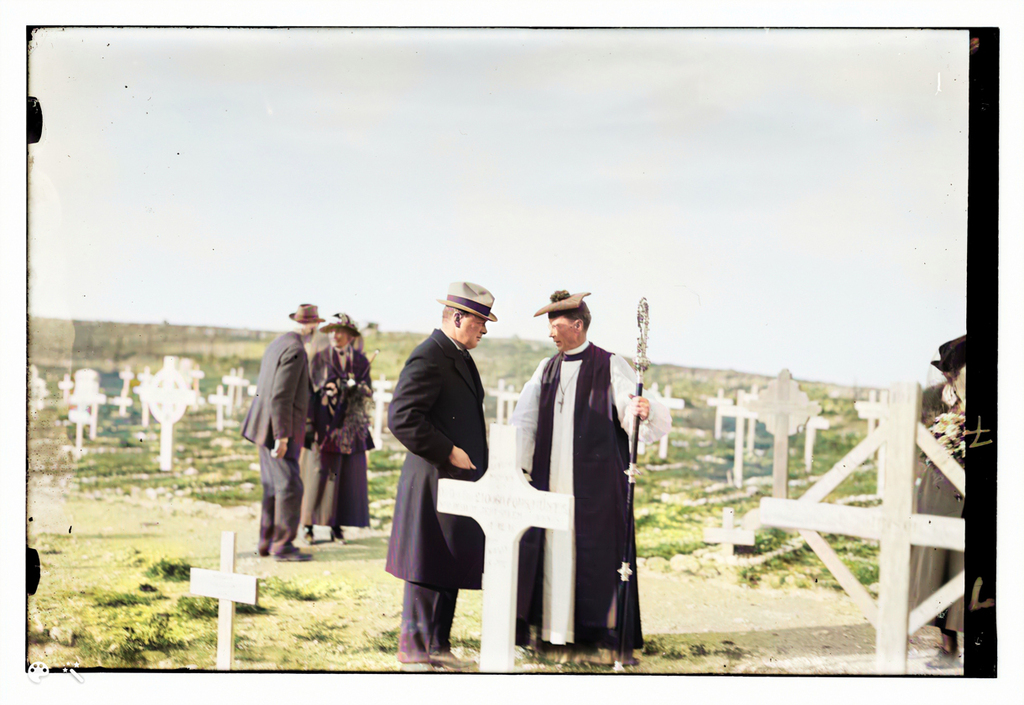

British Colonial Minister Winston Churchill and Bishop Rene McKains visit the military cemetery on Mount Scopus in Jerusalem, 1921
(Photo: The American Colony Photo Department, MyHeritage)
The photographers from the American colony also managed to document the notorious 1929 Palestine riots - which show masses of Arabs rioting in the Old City in front of helpless British policemen, as well as scores of Jewish families fleeing the violence.
13 View gallery
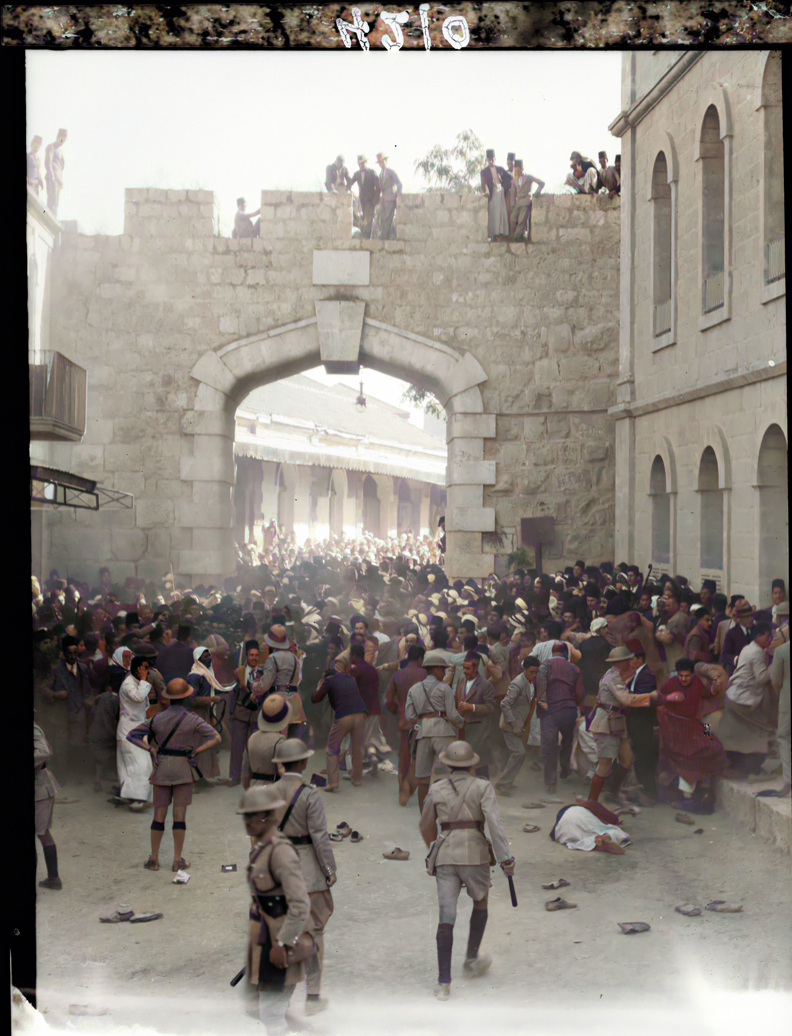

British soldiers during the 1929 Palestine riots in Jerusalem
(Photo: The American Colony Photo Department, MyHeritage)
The photos also show the aftermath of the publication of the so-called “White Paper of 1939” - a policy paper issued by the British government after the 1936–1939 Arab revolt - stating the kingdom’s intent to establish one country for both Jews and Palestinians.
13 View gallery
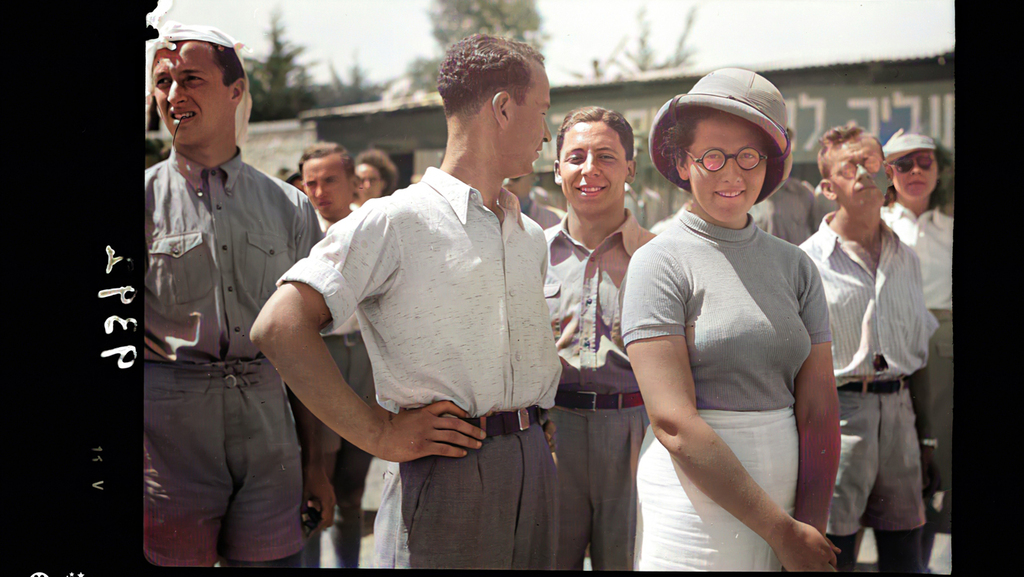

Jews protesting against the publication of the so-called 'White Paper of 1939'
(Photo: The American Colony Photo Department, MyHeritage)
In addition to the myriad of historical ceremonies, the photographers also managed to capture more mundane events, such as men and women praying at the Western Wall.
13 View gallery
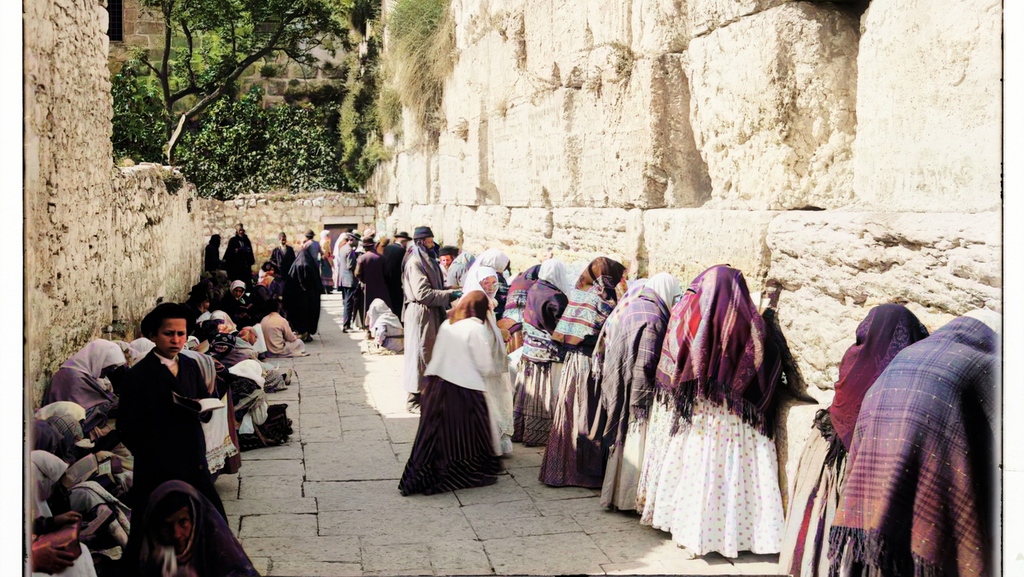

Men and women pray together in front of the Western Wall in the early 1920s
(Photo: The American Colony Photo Department, MyHeritage)
Other photos, meanwhile, show the rich human tapestry prevalent in the Land of Israel in the previous century.
13 View gallery
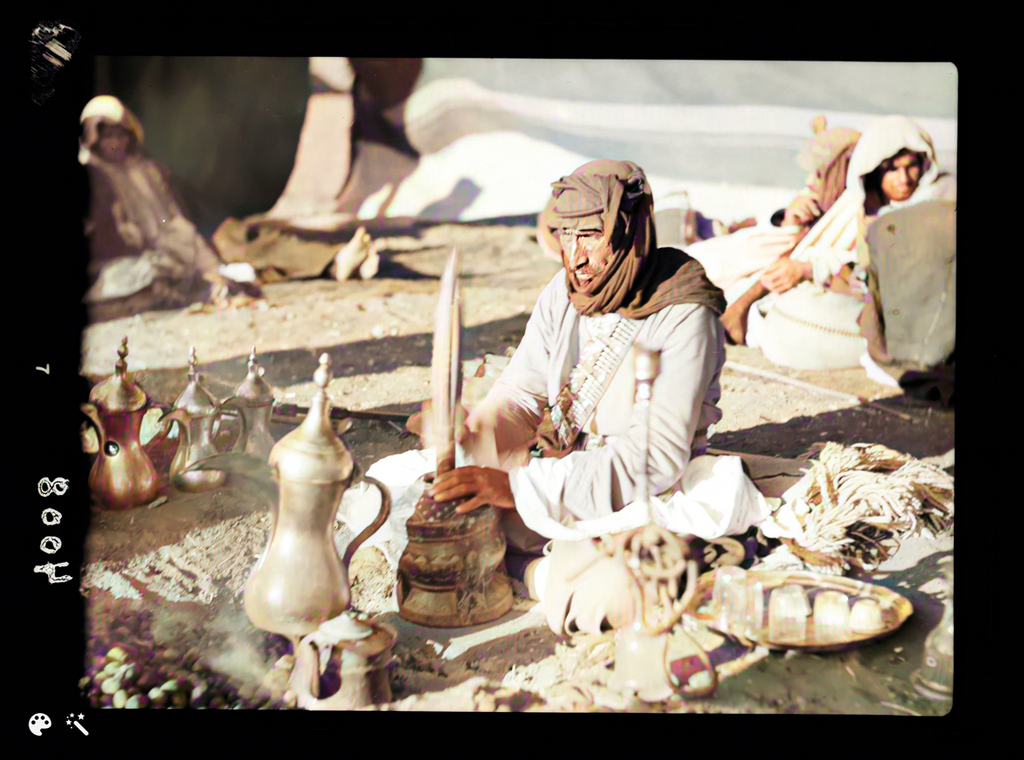

A Bedouin man grounding coffee near the jordan border, 1920-1933
(Photo: The American Colony Photo Department, MyHeritage)
These pictures simply showed residents who were inhabiting the land at the time, among them: Jews, Bedouin, Arabs, and others.
First published: 08:32, 12.04.21

